How to Optimize Windows for SSD Performance
Solid-state Drives (SSDs) offer faster read/write speeds, improved system responsiveness, and better durability than traditional Hard Disk Drives (HDDs). However, Windows 10/11 users should optimize their system settings to maximize SSD performance and lifespan. This guide outlines the best methods to enhance SSD efficiency.
Why SSD Optimization Matters
Unlike HDDs, SSDs have no moving parts and rely on flash memory for data storage. Optimizing Windows ensures reduced wear and tear, improved speed, and a longer lifespan. Without proper settings, SSD performance may degrade over time.
When optimizing Windows for SSD performance, it’s essential to understand Defragmentation, Optimization, and TRIM and how they affect SSD health and speed.
Defragmentation on SSDs
Unlike HDDs, SSDs do not need traditional defragmentation. Windows 10/11 automatically detects SSDs and disables conventional defragging to prevent unnecessary wear. However, Windows still performs occasional SSD optimization, which includes TRIM operations and, in some cases, limited defragmentation for system files.
Optimize Windows for SSD Performance
1. Optimization and TRIM for SSDs
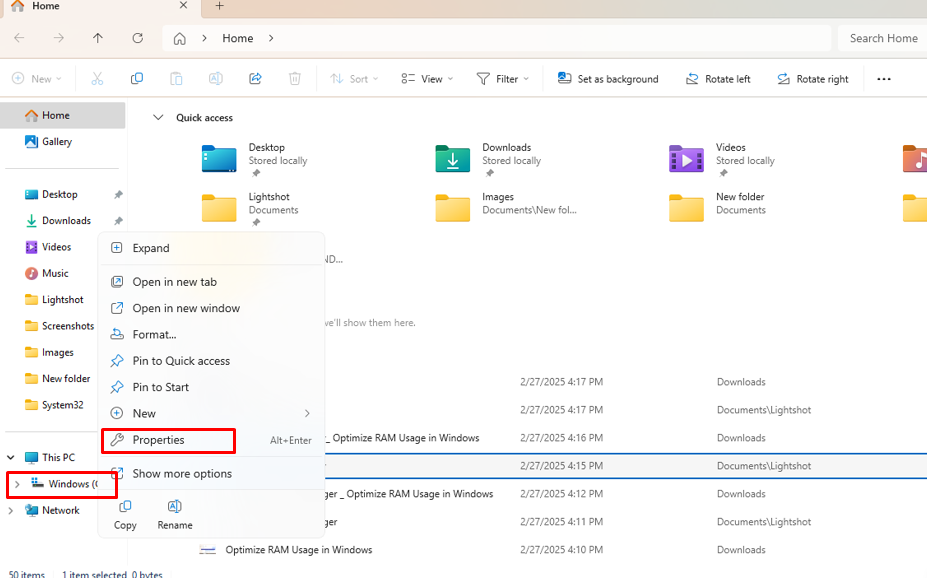
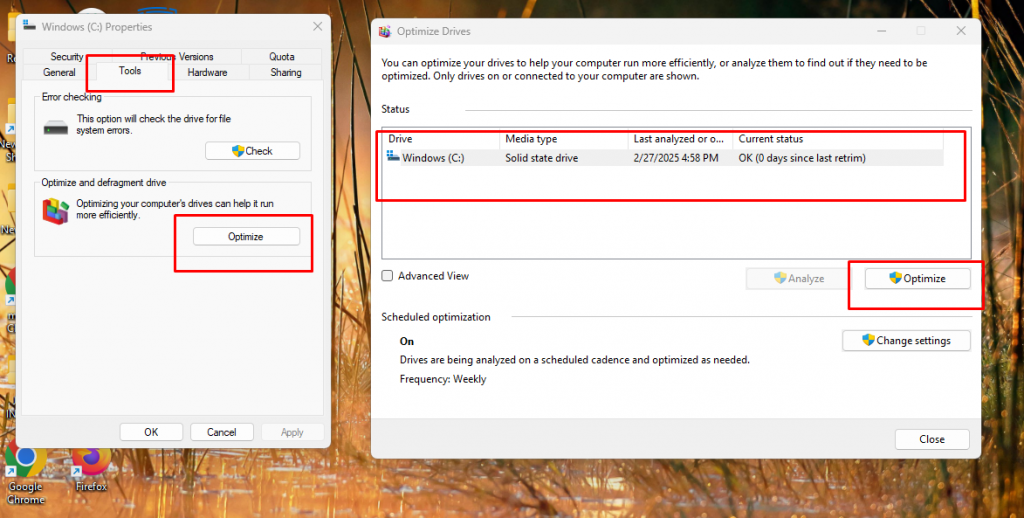
- TRIM Command: This feature allows Windows to inform the SSD which blocks of data are no longer in use so they can be wiped for better performance.
- Optimize Drives Tool: In Windows, TRIM is triggered automatically, but you can manually optimize your SSD:
- Open File Explorer, right-click on the SSD drive, and select Properties.
- Go to the Tools tab and click Optimize.
- Select your SSD and click Optimize to run TRIM.
Running TRIM periodically helps maintain SSD speed and efficiency without the risks associated with defragmentation.
2. Disable Indexing for Faster Performance
Windows Search indexing continuously writes data to SSDs, causing unnecessary wear.
- Press Win + R, type services.msc, and hit Enter.
- Scroll down to Windows Search and double-click it.
- Set the Startup type to Disabled and click OK.
3. Enable AHCI Mode for Maximum Speed
Advanced Host Controller Interface (AHCI) allows better SSD performance.
- Press Win + X, and select Device Manager.
- Expand IDE ATA/ATAPI controllers.
- If AHCI Controller is missing, enable AHCI in BIOS.
Steps to Enable AHCI in BIOS:
- Restart your PC and enter BIOS (usually F2, Del, or Esc during boot).
- Locate SATA Configuration under Advanced Settings.
- Change SATA Mode to AHCI.
- Save changes and restart.
4. Disable Hibernation to Save SSD Space
Hibernation stores session data on the SSD, consuming storage and write cycles.
- Open Command Prompt (Admin).
- Type the following command and press Enter:
- powercfg -h off
5. Turn Off System Restore (Optional)
System Restore creates snapshots that take up SSD space.
- Press Win + R, type sysdm.cpl, and hit Enter.
- Navigate to the System Protection tab.
- Select your SSD and click Configure.
- Choose Disable system protection and click Apply.
6. Keep Windows and Drivers Updated
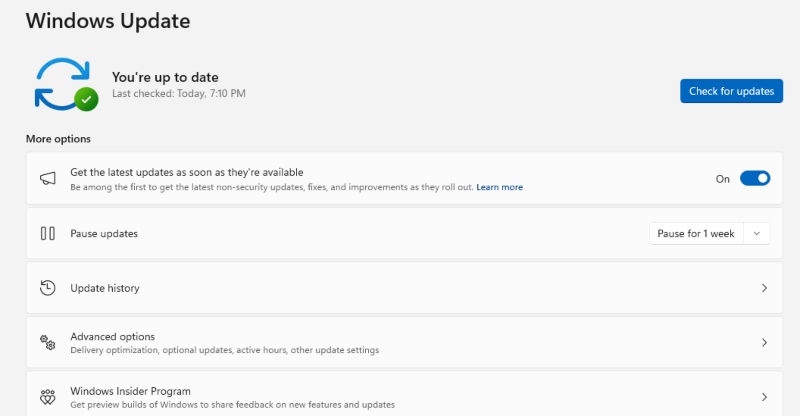
Updating Windows and drivers ensures compatibility and peak SSD performance.
- Press Win + I to open Settings.
- Click Windows Update > Check for updates.
- Install any available updates.
Steps to Update Drivers:
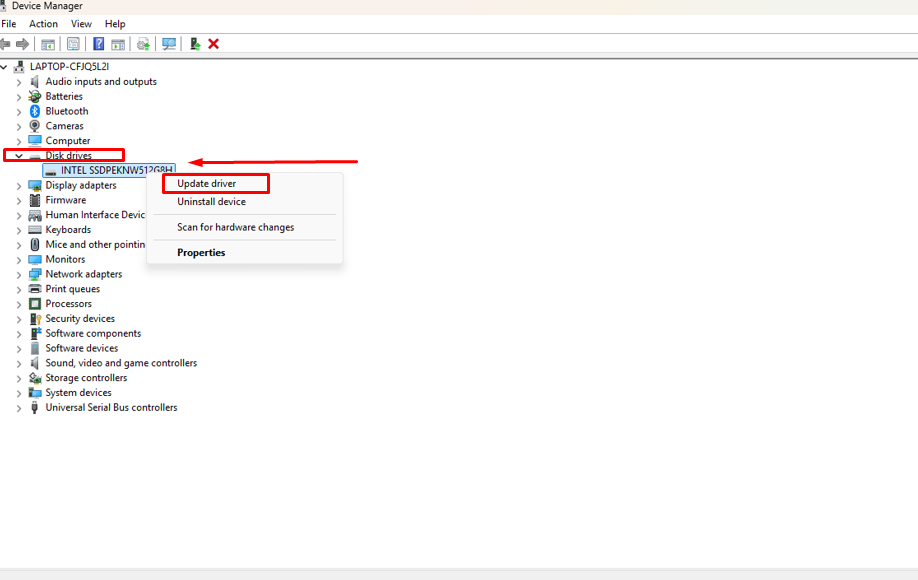
- Open Device Manager (Win + X > Device Manager).
- Expand Disk Drives and right-click your SSD.
- Select Update driver > Search automatically for drivers.
7. Use Fortect for Automated SSD Optimization
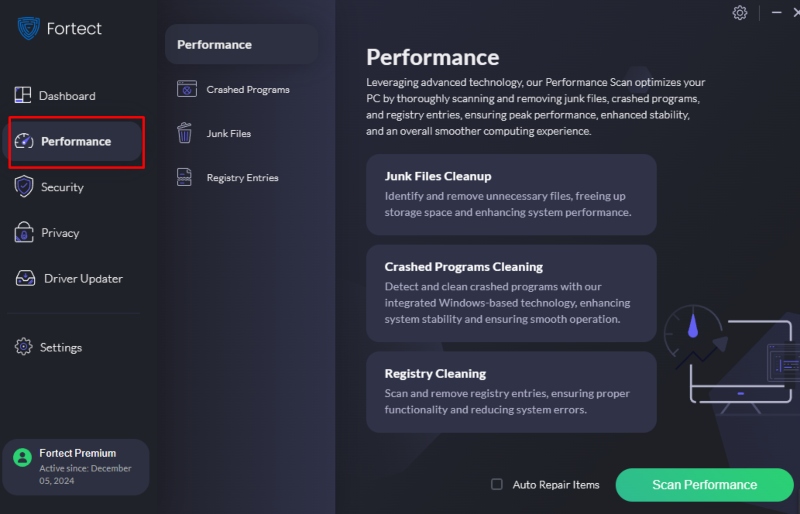
Use Fortect to ensure your SSD runs at peak performance. It automatically repairs system files, removes unnecessary junk, and updates outdated drivers to prevent slowdowns. Fortect optimizes your PC for maximum efficiency, ensuring a seamless computing experience.
Download and install Fortect for hassle-free SSD optimization.
Conclusion
Optimizing Windows for SSD performance enhances speed, efficiency, and longevity. Enabling TRIM, disabling indexing, updating drivers, and managing power settings can significantly improve your SSD’s lifespan. Implement these tweaks to keep your Windows 10/11 system running smoothly.
You may also check our article Laptop Slow After SSD Upgrade: 5 Easy Fixes when your SSD upgrade is causing slow performance on your machine.




